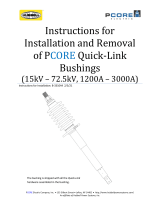
ii
6.4.1 How the Power Supply System Works ........................................................................ 6-11
6.4.2 How the Computer Works............................................................................................ 6-11
6.4.3 How the Autofill/Autoskim System Works ................................................................. 6-12
6.4.4 How the Water Heating System Works ....................................................................... 6-12
6.4.5 How the Basket Lift System Works ............................................................................. 6-13
6.4.6 Technician Troubleshooting Guides ............................................................................ 6-14
Troubleshooting the 24VAC Power Supply System.................................................... 6-14
Troubleshooting the 24VAC Power to Computer........................................................ 6-15
Troubleshooting the Autofill System ........................................................................... 6-16
Troubleshooting the Water Heating System ................................................................ 6-17
Troubleshooting the Basket Lift System ...................................................................... 6-18
6.5 Parts List....................................................................................................................... 6-19
Accessories................................................................................................................... 6-19
Basket Lift Components............................................................................................... 6-20
Cabinetry ...................................................................................................................... 6-22
Cookpot, Rinse Tank, and Drain Components............................................................. 6-24
Electronics .................................................................................................................... 6-26
Water Supply System Components.............................................................................. 6-28
6.6 Wiring Diagram............................................................................................................ 6-29
CHAPTER 7: ESW/EWBS Service Procedures & Parts
7.1 Functional Description ................................................................................................... 7-1
7.2 Accessing Equipment for Servicing ............................................................................... 7-3
7.3 Replacing Equipment Components ................................................................................ 7-3
7.3.1 Replacing the Computer................................................................................................. 7-3
7.3.2 Replacing Electronic Components Other than the Computer ........................................ 7-3
7.3.3 Replacing a Heating Element ......................................................................................... 7-4
7.3.4 Replacing the High-Limit Thermostat ........................................................................... 7-5
7.3.5 Replacing a Water-Level Sensor.................................................................................... 7-6
7.3.6 Replacing the Temperature Probe .................................................................................. 7-6
7.3.7 Replacing the Pressure Regulator or Solenoid Valve .................................................... 7-8
7.3.8 Replacing the Water Faucet ........................................................................................... 7-8
7.3.9 Replacing a Basket Lift Motor or Microswitch.............................................................. 7-9
7.3.10 Replacing the Cookpot ................................................................................................. 7-10
7.4 Technician Troubleshooting......................................................................................... 7-12
7.4.1 How the Power Supply System Works ........................................................................ 7-12
7.4.2 How the Computer Works............................................................................................ 7-12
7.4.3 How the Autofill and Skim Systems Work.................................................................. 7-13
7.4.4 How the Water Heating System Works ....................................................................... 7-13
7.4.5 How the Basket Lift System Works ............................................................................. 7-14
7.4.6 Technician Troubleshooting Guides ............................................................................ 7-15
Troubleshooting the 24VAC Power Supply System.................................................... 7-15
Troubleshooting the Autofill System ........................................................................... 7-16
Troubleshooting the Water Heating System ................................................................ 7-17
Troubleshooting the Basket Lift System ...................................................................... 7-18
7.5 Parts List....................................................................................................................... 7-19
Accessories................................................................................................................... 7-19
Basket Lift Components............................................................................................... 7-20
Cabinetry ...................................................................................................................... 7-22




























